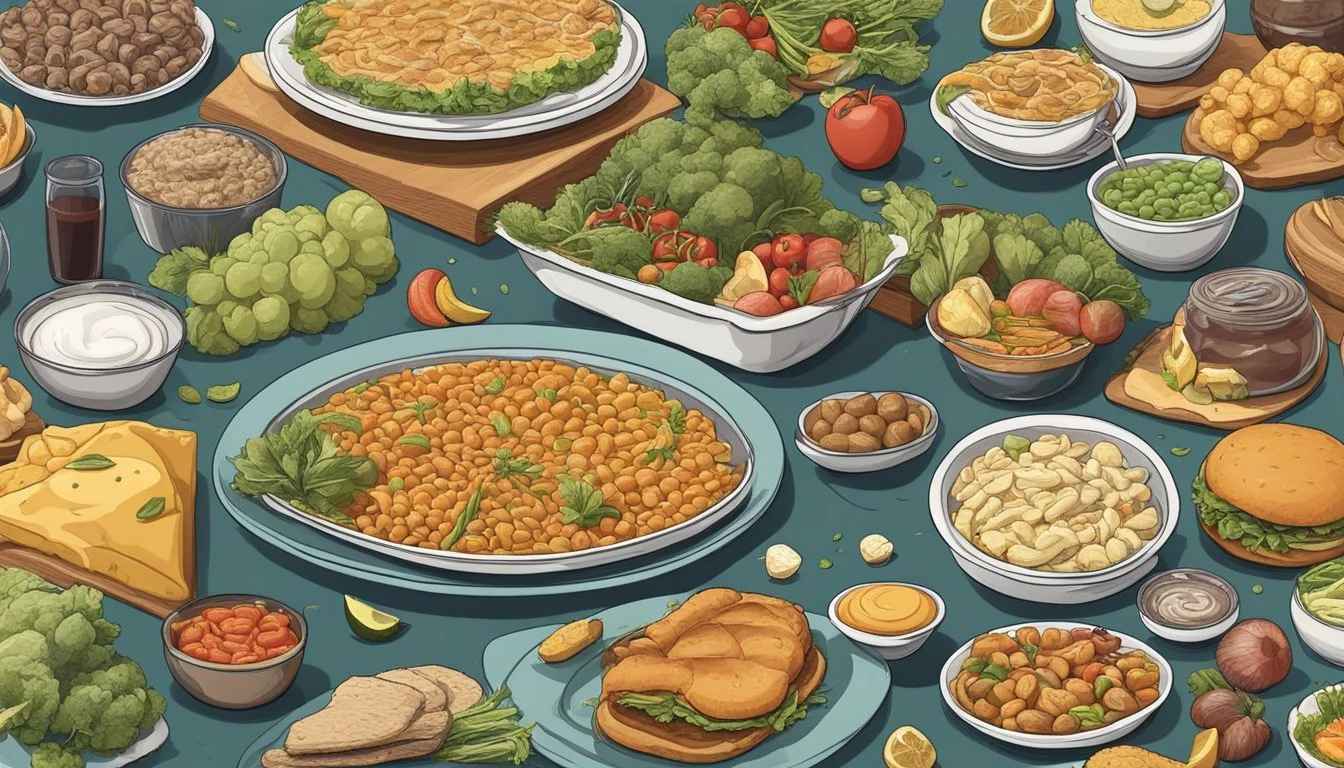Why Am I Not In Ketosis on Carnivore Diet
Common Mistakes and Fixes
The carnivore diet, characterized by its exclusive consumption of animal products, typically steers individuals toward a state of ketosis due to its low carbohydrate content. Ketosis is a metabolic state where the body burns fat for fuel instead of carbohydrates, often a goal for those on a ketogenic or carnivore diet. However, some adherents find themselves puzzled when they fail to enter ketosis despite following a strict carnivore regimen. Understanding the factors that contribute to this discrepancy is crucial for optimizing the diet and achieving the desired metabolic state.
One common issue that may prevent ketosis is an excessive intake of protein. While the carnivore diet is inherently rich in protein, the body can convert excess protein into glucose through a process known as gluconeogenesis, potentially inhibiting ketosis. Another factor to consider is the overall balance of fat intake which is essential on a low-carb diet. Without sufficient dietary fat, the body may not generate enough ketones for ketosis. Individuals struggling to enter ketosis on a carnivore diet might need to adjust their macronutrient ratios accordingly.
It's also imperative to remember that individual metabolic responses can vary. Factors such as overall calorie intake, hormonal imbalances, and even stress levels can affect one's ability to sustain ketosis. For those on the carnivore diet not experiencing ketosis, it may be beneficial to review their eating habits and lifestyle choices to identify and rectify any inhibiting factors.
Understanding Ketosis
When delving into a carnivore diet, one often expects to enter ketosis—a metabolic state where the body uses fat as its primary energy source. Here, we unpack the mechanism behind ketosis, emphasizing the role carbohydrates play and the energy production from ketone bodies.
Defining Ketosis and Nutritional Ketosis
Ketosis is the body's metabolic state characterized by elevated levels of ketone bodies in the blood, which occurs when glycogen stores in the liver are depleted. Nutritional Ketosis specifically refers to the ketosis induced by a change in diet, often a ketogenic diet, where the intake of carbohydrates is severely restricted to typically less than 50 grams per day, encouraging the body to use fat as its main fuel source.
The Role of Carbohydrates in Ketosis
Carbohydrates are the body's preferred fuel source, as they are converted into glucose, which is easily utilized for energy. A key to achieving ketosis is the significant reduction of carbohydrate intake, which forces the body to switch to its fat stores for energy once its glucose levels are insufficient for its energy needs.
Ketone Bodies and Energy Production
Ketone bodies, primarily beta-hydroxybutyrate, acetoacetate, and acetone, are produced by the liver from fatty acids during periods of low food intake, carbohydrate restrictive diets, or intense exercise. These ketones serve as an alternative fuel source for various tissues, including the brain, when glucose is not readily available. Utilizing ketone bodies for energy can lead to increased fat burning and weight loss, which is a desired effect of the ketogenic diet and its variations like the carnivore diet.
The Carnivore Diet Explained
The Carnivore Diet centers on consuming exclusively animal products and is regarded as a zero-carb diet focusing on high fat and protein intake.
Principles of the Carnivore Diet
The Carnivore Diet operates on the premise that human beings should eat primarily animal products. It prioritizes meat, specifically red and fatty cuts, organ meats, and animal fat. Unlike diets that include plant-based foods, it excludes vegetables, fruits, nuts, seeds, and grains.
Comparing Carnivore Diet to Low-Carb and Keto Diets
While all three diets reduce carbohydrate intake, the Carnivore Diet takes it to the extreme by eliminating them entirely. Low-carb diets often still include a limited selection of plant-based foods, and the Keto Diet requires a careful balance of low carbohydrates, moderate protein, and high fat—often from both plant and animal sources.
In contrast, the Carnivore Diet focuses exclusively on animal products and therefore typically results in a higher intake of both protein and fat.
Common Foods Consumed in the Carnivore Diet
People following a Carnivore Diet consume mainly:
Muscle meat: Beef, pork, lamb, and chicken
Organ meats: Liver, heart, and kidneys, which are nutrient-dense
Animal fat: Fatty cuts of meat or rendered forms like tallow and lard
This diet emphasizes the importance of eating whole-animal products, which includes a variety of meats and organ meats to meet nutritional needs.
Online stores offer unbeatable prices for tallow or lard, so don't miss out!
Reasons for Not Achieving Ketosis
When transitioning to a carnivore diet, one expects to enter ketosis by significantly reducing carbohydrate intake. However, there are a few key factors that can inhibit this metabolic state, from the proportions of macronutrients consumed to physiological conditions that might interfere with the process.
Excessive Protein Intake
Protein is essential for maintaining muscle mass and bodily functions, but when one consumes more protein than the body requires, it can be converted into glucose through gluconeogenesis. This elevation in glucose could, in turn, prevent the body from entering ketosis, where it relies on fat stores for energy rather than circulating glucose.
Hidden Carbohydrates and Miscounting
The carnivore diet is presumed to be virtually free of carbohydrates. However, one might inadvertently consume hidden carbohydrates found in certain meat products—such as sausages or other processed meats—which could disrupt ketosis. Accurate tracking of intake is critical to ensure carbohydrate levels remain below the threshold conducive to maintaining ketone production.
Insufficient Fat Consumption
Fat intake is critical on a carnivore diet as it should be the primary source of energy in the absence of carbohydrates. If fat consumption is too low, the body may not have adequate substrates to produce ketones. Ensuring a sufficient fat intake with the right ratio of macronutrients is vital for the body to initiate and sustain ketosis.
Medical Conditions and Medications
Certain medical conditions can affect how the body metabolizes nutrients and could inhibit the production of ketones. Likewise, some medications can influence insulin levels or interfere with metabolism in ways that reduce the body’s ability to enter ketosis. It's essential for individuals with health conditions or on medication to consult with healthcare professionals regarding their diet.
Additional Factors Influencing Ketosis
Entering ketosis is not solely about dietary intake; various lifestyle factors significantly impact this metabolic state. A person's stress levels, sleep quality, physical activity, hydration, and macronutrient ratios all play pivotal roles.
Impact of Stress and Sleep on Ketosis
Chronic stress can lead to elevated cortisol levels, potentially disrupting ketosis by increasing blood sugar. Sleep quality also has a direct impact; insufficient sleep may cause hormonal imbalances that hinder the body's ability to enter ketosis.
Physical Activity's Effect on Ketosis
Physical activity can enhance the process of entering ketosis. Through exercise, the body depletes glucose stores faster, encouraging the shift to fat as a primary energy source, thereby promoting ketosis.
Hydration and Its Role in Ketosis
Adequate hydration is essential for maintaining all bodily functions, including the efficient transition into ketosis. When the body is well-hydrated, ketone production and utilization are optimized.
The Importance of Macronutrient Ratios
Macronutrient ratios are crucial for achieving ketosis. The appropriate balance usually involves high fat intake, moderate protein, and very low carbohydrate consumption. Any imbalance, especially an intake too low in fats or too high in proteins, may impede the onset of ketosis.
Optimizing Your Diet for Ketosis
To effectively reach ketosis, one must carefully manage macronutrient intake and consider the timing of meals. Monitoring key indicators can guide dietary adjustments to achieve optimal ketone production.
Adjusting Fat and Protein Intake
For one to enter ketosis on a carnivore diet, fat consumption is essential because it provides the primary energy source. A person should aim for a high fat intake, typically around 60-70% of total calories, while maintaining a moderate protein intake to ensure the body uses fat as its primary fuel source. Too much protein can lead to gluconeogenesis, where the body converts excess protein into glucose, which could hinder the production of ketones.
The Timing of Meals and Fasting
Adjusting the time between meals may facilitate ketosis. Longer periods between eating can encourage the body to tap into fat stores for energy, increasing the production of ketones. A structured eating schedule with fewer meals can help manage insulin levels and support metabolic changes conducive to ketosis.
Incorporating Intermittent Fasting
Intermittent fasting (IF) synergizes with the carnivore diet to promote ketosis. IF involves alternating cycles of eating and fasting, which can range from 12-hour fasts to days of fasting. This approach can augment ketone production as it may reduce glycogen stores, forcing the body to convert fat into ketones for energy.
Monitoring Ketones with Testing
To ensure that one is in ketosis, testing ketone levels using a ketone meter or urine test is recommended. These tools measure the concentration of ketones like beta-hydroxybutyrate (BHB) in mmol/L or acetone levels in the urine. A reading of 0.5 mmol/L or higher typically indicates that the person is in a state of ketosis. Regular monitoring can help fine-tune dietary choices for optimal ketone production.
Common Misconceptions and Myths
Entering and maintaining a state of ketosis on a carnivore diet can be influenced by several factors. This section will address key misconceptions and myths that may prevent individuals from achieving ketosis despite following a carnivore diet.
The Myth of Unlimited Fat Consumption
Contrary to popular belief, unlimited fat consumption does not guarantee one's entry into ketosis. The carnivore diet, which is high in fat, requires a balance; an excess intake of fat, particularly sources like butter and cheese, can result in a calorie surplus which may hinder ketosis.
Misunderstanding the Role of Dairy and Eggs
Dairy and eggs are often included in a carnivore diet but they can be double-edged swords. Some dairy products, particularly those that are lower in fat and higher in lactose, can have enough carbohydrates to disrupt ketosis. It's crucial to monitor one's intake of dairy, focusing on high-fat, low-carb options like certain cheeses.
Myths Surrounding Exercise and Ketosis
There are misconceptions regarding exercise and its effect on ketosis. While exercise is beneficial for overall health, the myth that one must perform high levels of cardio to enter ketosis is inaccurate. In reality, a combination of resistance training and moderate cardio can support the fat-burning state without an insistence on high-intensity workouts.
Potential Side Effects and Remedies
Transitioning to a carnivore diet and achieving ketosis can involve several side effects. Addressing these effectively requires understanding their causes and implementing specific strategies.
Addressing Keto Flu Symptoms
The keto flu is a common set of symptoms experienced during the initial phase of a diet that induces ketosis. Individuals may experience fatigue, headaches, and irritability. These symptoms stem from the body's adaptation to using fat for energy rather than carbohydrates. Remedies include:
Ensuring adequate fat intake to maintain energy levels.
Gradually reducing carbohydrate intake to ease the transition.
Staying hydrated and getting ample sleep to aid the body in adjusting.
Managing Dehydration and Electrolyte Balance
A carnivore diet can lead to dehydration and electrolyte imbalance, as the body excretes more water when it shifts into ketosis. Recognizable signs of dehydration can include dry mouth and increased thirst. Remedies to consider are:
Consuming broth or bone stock, rich in minerals.
Adding a pinch of salt to water or meals to replenish sodium levels.
Drinking sufficient water to offset increased urinary output.
Cognitive Performance and Mental Clarity
As the body adapts to a ketogenic state, some individuals may notice a temporary decline in cognitive performance or brain fog. This is typically a short-term effect. To support mental clarity, they should:
Consume foods high in omega-3 fatty acids for brain health.
Maintain stable blood sugar levels through consistent meal timing.
Allow for a period of adjustment where the brain transitions to using ketones for fuel.
Health Considerations and Contraindications
When shifting to a carnivore diet, it's crucial to understand its potential impact on existing health conditions and overall body metabolism, particularly in the context of inducing ketosis.
The Effect on Diabetes and Blood Sugar Control
For individuals with diabetes, a carnivore diet could influence insulin regulation and blood sugar levels. By eliminating carbs and sugar, the diet may reduce blood sugar spikes, potentially benefiting those with type 2 diabetes. However, diabetics should closely monitor their blood sugar and consult healthcare providers, as significant dietary changes can affect insulin requirements.
Insulin Sensitivity: May improve due to low carbohydrate intake.
Blood Sugar Levels: Can be more stable as the diet lacks traditional sources of sugar.
Risks of Cardiovascular Disease
With a heavy reliance on meat, a carnivore diet's high fat intake might raise concerns about cardiovascular risks. Studies link saturated fat to heart disease, yet context and individual health profiles play a role. It's important to distinguish between sources of fat and to consider the kind of meats consumed (e.g., choosing leaner cuts).
Saturated Fat: Monitoring intake is advisable to mitigate potential cardiovascular risks.
Weight Loss and Body Composition Changes
A carnivore diet may lead to weight loss due to its potential for lower calorie consumption from the absence of carbs. An obese individual might experience significant body composition changes as a result. However, the sustainability and long-term effects on body composition should be evaluated.
Caloric Intake: Often naturally restricted on a carnivore diet, possibly aiding in obesity management.
Fat Loss vs. Muscle Mass: Attention needed to ensure maintenance of muscle mass whilst losing fat.
Note: Each body reacts differently, and while some may find success with ketosis through a carnivore diet, others may encounter health issues. It's always essential to seek personalized medical advice.
Conclusion
Entering a state of nutritional ketosis on a carnivore diet is generally anticipated given the diet's extremely low carbohydrate content. Ketosis requires the body to shift its fuel source from carbohydrates to fats, resulting in the production of ketones. A person's failure to achieve this metabolic state while adhering to a carnivore diet could arise from several factors.
Fat Intake: Sufficient dietary fat is crucial. Without ample fat, the body may not produce enough ketones to reach ketosis.
Protein Intake: Excess protein can inhibit ketosis, as it can be converted to glucose in a process called gluconeogenesis.
Body's Adaptation: Individual metabolic differences may affect how quickly one enters ketosis.
To monitor progress accurately, measuring ketone levels can be helpful. High ketone levels typically reflect a state of ketosis and can be linked to increased satiety and body fat utilization.
Here are basic checkpoints for individuals:
Ensure Adequate Fat: The diet should be high in fats to provide the necessary fuel for ketosis.
Balance Protein Intake: Protein should be adequate but not excessive to avoid gluconeogenesis.
Monitor Ketone Levels: Those looking for concrete evidence of ketosis should consider using ketone measuring tools.
By focusing on these adjustments, individuals on a carnivore diet can better align with the requirements of nutritional ketosis and potentially reap the associated benefits of fat as a primary fuel source.









